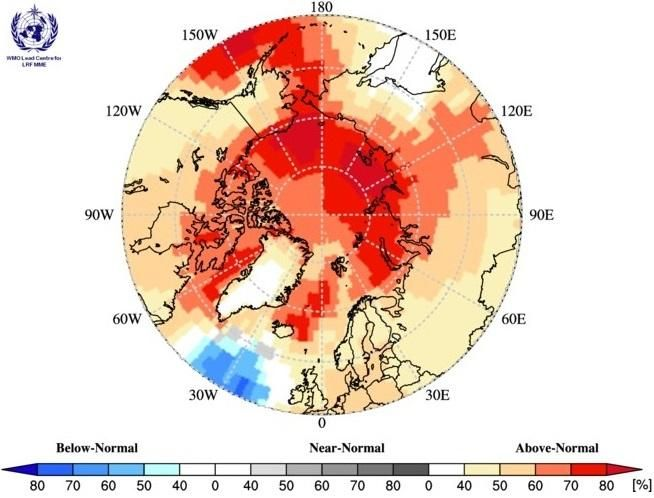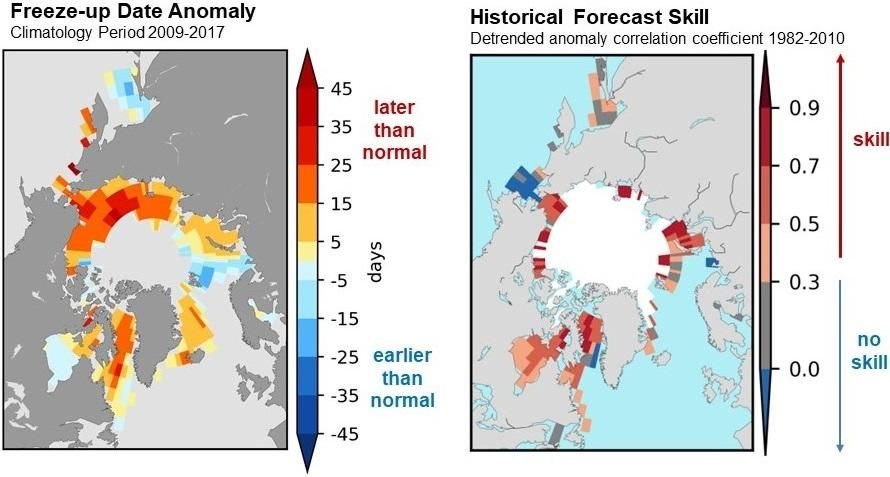The images below show seasonal outlooks for November 2019 to January 2020, for temperature, precipitation and sea ice. More details can be found in the ACF-4 Verification of JJA 2019 season and seasonal forecast of NDJ 2019/2020 season presentation and the ACF-4 Sea-Ice Outlook presentation.
Temperature NDJ 2019-20 Outlook
Surface air temperatures during winter 2019-2020 (NDJ: November 2019, December 2019, January 2020) are forecast to be above normal across the majority of the Arctic regions (orange and red areas in the figure below). The confidence of the forecast is moderate to low over most of the southern Arctic, especially over the southern continental Alaska, Canadian, European, Chukchi, Western and Eastern Siberian regions. (yellow and orange areas). Forecast confidence increases with latitude from low/moderate to moderate/high for all regions (dark red areas). The multi-model ensemble did not agree over southern Greenland (white areas).

Precipitation NDJ 2019-20 Outlook
Precipitation during winter 2019-2020 (NDJ: November 2019, December 2019, January 2020) is forecast to be above normal across most of the Arctic regions (green areas in the figure below). The confidence of the forecast is mostly low (light green areas), with higher confidence concentrated in the vicinity of the Beaufort Sea in the Alaska Chikchi, and Central Arctic regions, and the Eastern Siberian Sea in the Eastern Siberia region (dark green areas). The multi-model ensemble did not agree over the majority of the Western Siberia and Atlantic regions (white areas).

Outlook for Fall freeze-up 2019 and Sea Ice Extent March 2020
The outlook (figure below) for fall freeze-up shown in the figure below is an experimental forecast from CanSIPS (ECCC). The qualitative 3-category (high, moderate, low) confidence in the forecast is based on the historical model skill. Only regions where the model has historical skill are included in the outlook.

Maximum sea ice extent in the Arctic is normally reached each year during the month of March. The outlook for the winter maximum sea ice extent is shown in the figure below.

